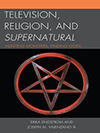- Author(s): Caesar A. Montevecchio
- When: 2015-01
- Where: Journal of Religion & Film
In Christian tradition, the primary effects of the Eucharist are the formation of koinonia and the facilitating of metanoia. Metaphorically, these effects make the Eucharist a symbol of community building and personal transformation. However, the way that such symbolic meaning is emplotted in film can vary between two distinct approaches. Augmentative usage uses Eucharistic symbols to deepen and amplify narrative instances of community building, such as by family gathering or reconciliation between characters, or character growth. In ironic usage, Eucharistic symbols elicit standards of virtue and goodness that help critique actions or events that damage koinonia or prevent characters from achieving metanoia. In addition to addressing these patterns of usage, this paper will also suggest criteria for when filmic content can be reasonably interpreted as Eucharistic. Examples to be discussed for augmentative usage include Moonstruck, Romero, Babette’s Feast, and Beasts of the Southern Wild. Examples to be discussed for ironic usage include Arsenic and Old Lace, The Godfather Part II, The Searchers, and Pan's Labyrinth.







